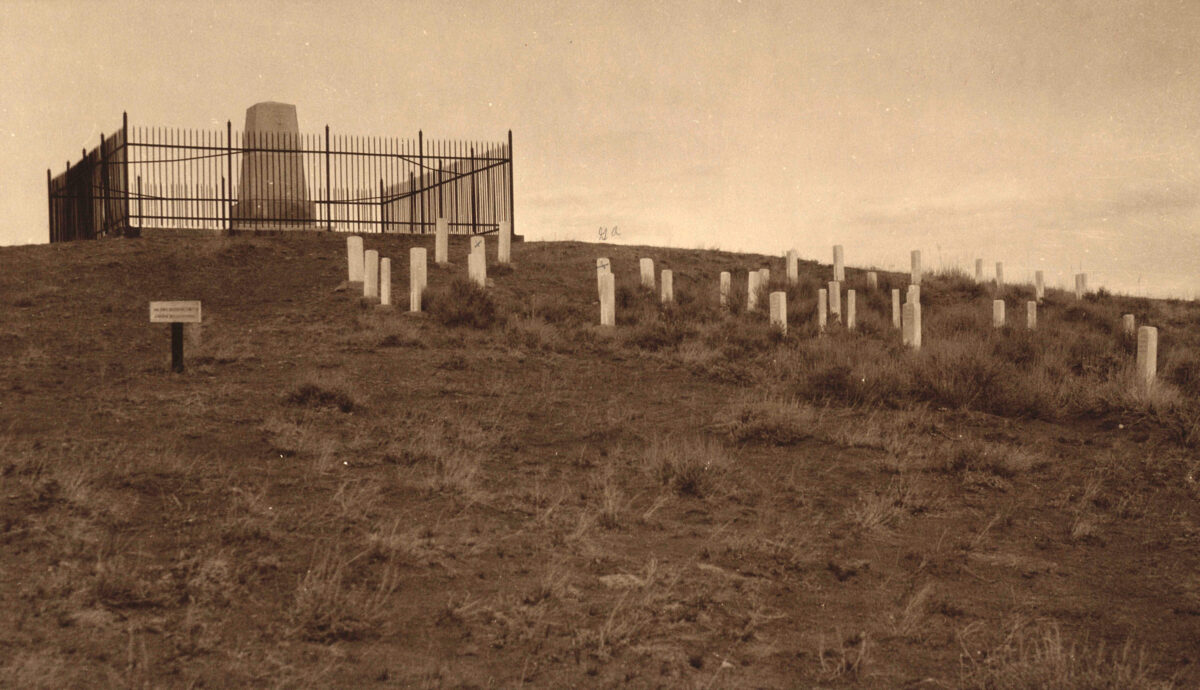It is a tale as familiar to Western history buffs today as it was to any American reading the headlines back in the summer of 1876. That June 25 Civil War hero George Armstrong Custer and 268 officers and troopers of his 7th U.S. Cavalry command rode to their deaths in battle against overwhelming numbers of Sioux and Cheyenne warriors on the Little Bighorn River in Montana Territory. Tapped out through telegraph lines snaking east, the news sent shockwaves across the nation, dulling ongoing celebrations of the nation’s centennial. The memorialization of the battlefield since has had a long and solemn history.
Two days after the battle surviving troopers were the first to find the bodies of their fellow cavalrymen, most stripped of their clothing, ritually mutilated and already beginning to decompose. After identifying them as best as they could, they buried the dead in place, leaving the bones of their horses to bleach in the sun.
Eerily, the only Indian corpses that remained on the field those of the Army’s Crow scouts, as the families and friends of fallen Sioux and Cheyenne warriors had already removed them from the field and taken them away for traditional burial. Many raised stone cairns to mark where they’d fallen.
A year later U.S. Army burial parties returned to recover, transport and reinter the remains of many officers, including Custer, who, widow Elizabeth ensured, was buried with honors at West Point.
In 1879 infantrymen again visited the site, tasked with creating a burial mound of human and equine bones on Last Stand Hill. Two years later troopers of the 2nd Cavalry erected a stout granite obelisk atop the hill in honor of the 7th Cavalry and pounded stakes into the ground to mark where the slain had fallen. In 1890 soldiers swapped out the stakes with white marble military markers inscribed with the names of the dead.
Those markers remain central to the present-day visitor experience, and in recent years they’ve been augmented by markers to their slain opponents.
The first such marker, in honor of Northern Cheyenne warrior Lame White Man, was dedicated in 1958, though it was made of wood. Not until Memorial Day 1999 did he and another dead warrior receive proper marble markers — red ones inscribed with both their original Cheyenne names and the English equivalents. Lame White Man is now memorialized properly as Ve’ho’enȯhnehe.
Administrators of Little Bighorn Battlefield National Monument continue to erect red marble markers at all confirmed sites where Sioux and Cheyenne warriors fell, and in 2003 officials dedicated the Indian Memorial, a bronze sculpture of three horsemen and a woman handing them a shield. As wounds have healed, the national monument has evolved into a shared space that honors the military service and intertwined destinies of American soldiers and Great Plains warriors alike.
historynet magazines
Our 9 best-selling history titles feature in-depth storytelling and iconic imagery to engage and inform on the people, the wars, and the events that shaped America and the world.


